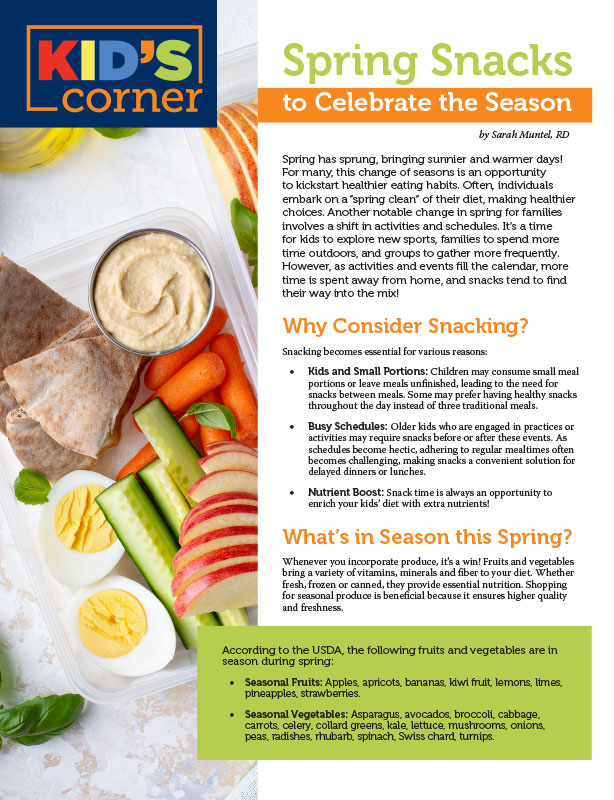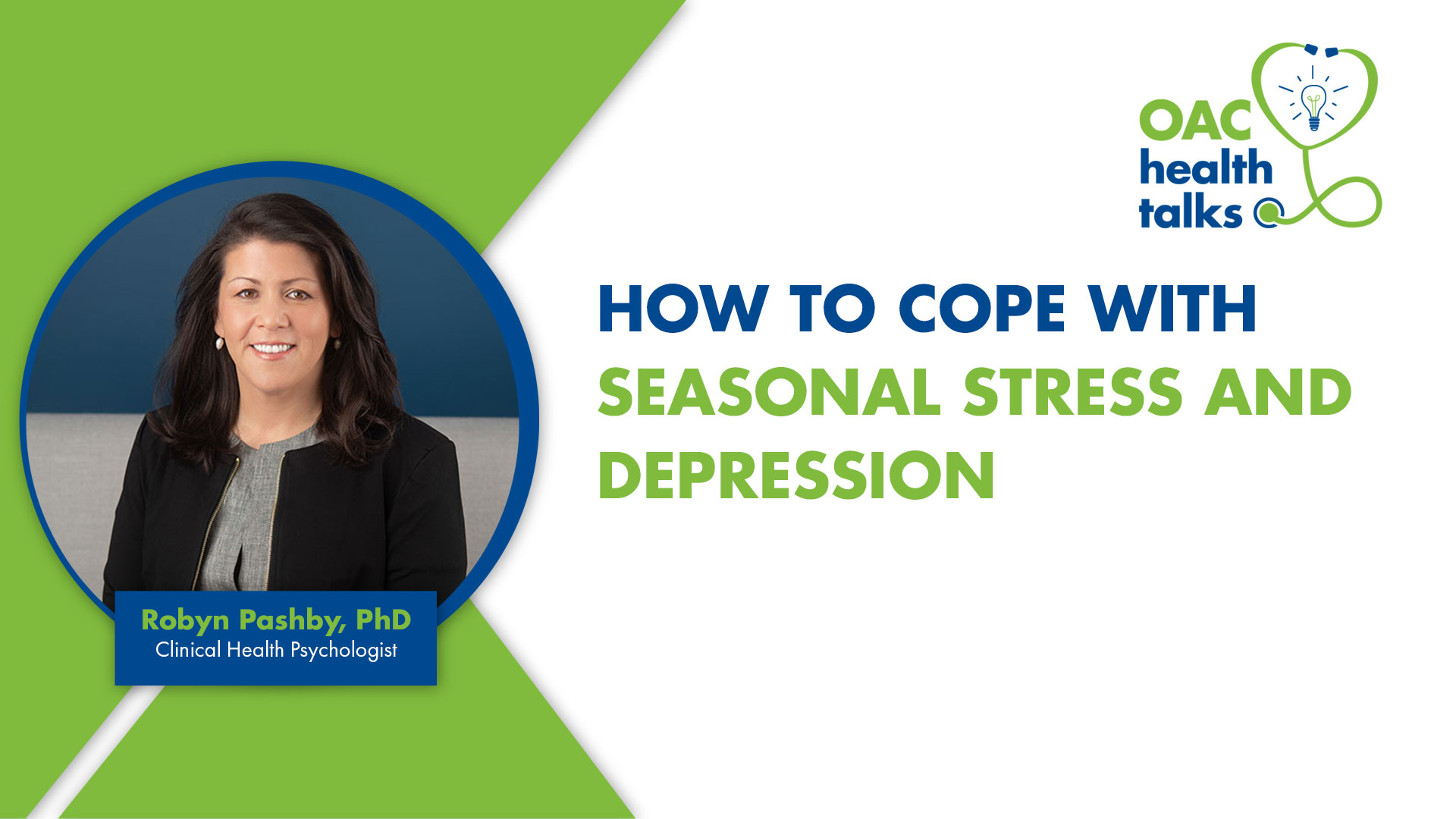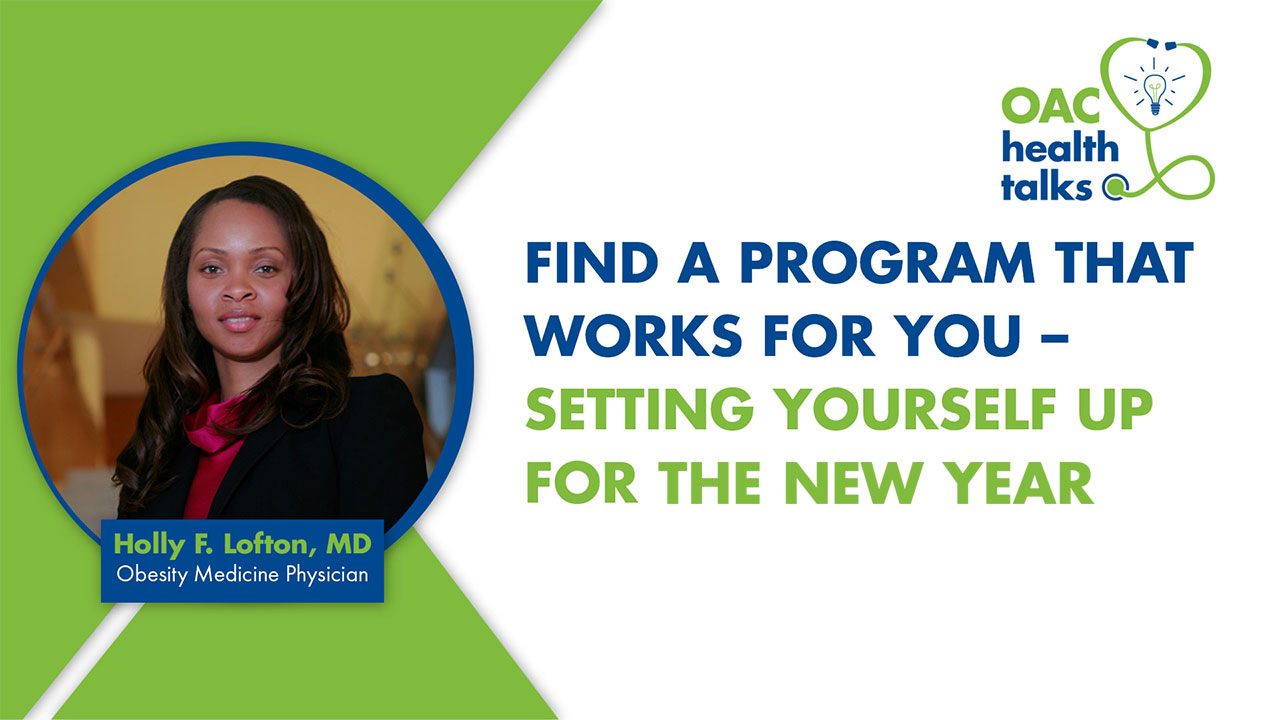Nutrition: Fall in Love…With Vegetables!

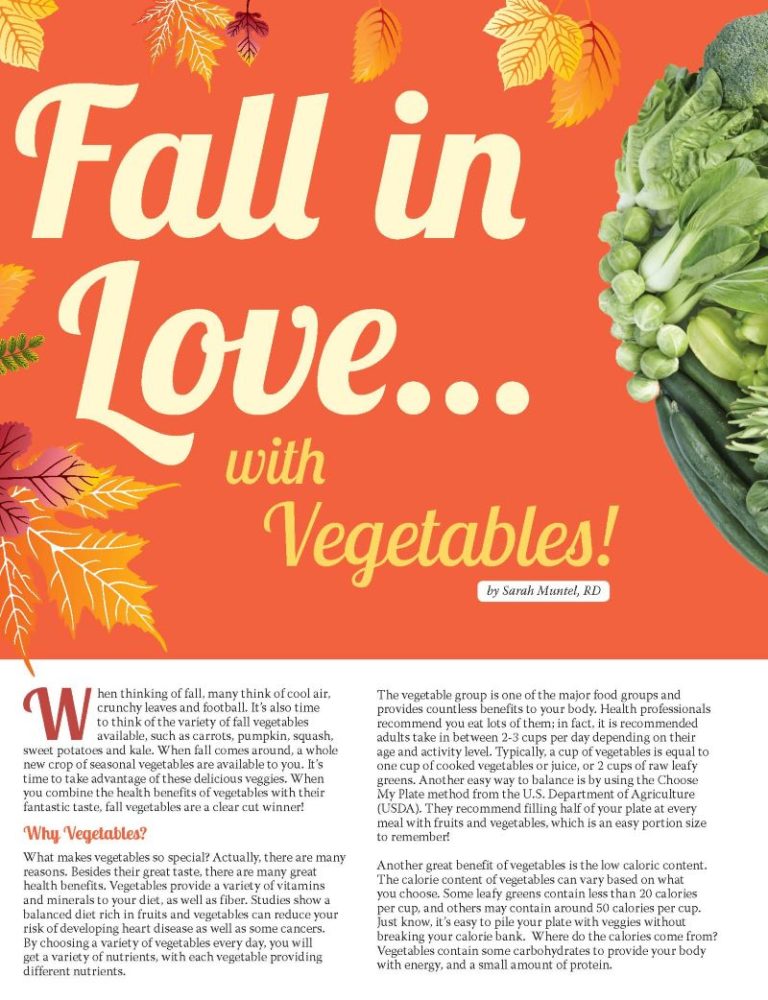
by Sarah Muntel, RD
Fall 2015
When thinking of fall, many think of cool air, crunchy leaves and football. It’s also time to think of the variety of fall vegetables available, such as carrots, pumpkin, squash, sweet potatoes and kale. When fall comes around, a whole new crop of seasonal vegetables are available to you. It’s time to take advantage of these delicious veggies. When you combine the health benefits of vegetables with their fantastic taste, fall vegetables are a clear cut winner!
Why Vegetables?
What makes vegetables so special? Actually, there are many reasons. Besides their great taste, there are many great health benefits. Vegetables provide a variety of vitamins and minerals to your diet, as well as fiber. Studies show a balanced diet rich in fruits and vegetables can reduce your risk of developing heart disease as well as some cancers. By choosing a variety of vegetables every day, you will get a variety of nutrients, with each vegetable providing different nutrients.
The vegetable group is one of the major food groups and provides countless benefits to your body. Health professionals recommend you eat lots of them; in fact, it is recommended adults take in between 2-3 cups per day depending on their age and activity level. Typically, a cup of vegetables is equal to one cup of cooked vegetables or juice, or 2 cups of raw leafy greens. Another easy way to balance is by using the Choose My Plate method from the U.S. Department of Agriculture (USDA). They recommend filling half of your plate at every meal with fruits and vegetables, which is an easy portion size to remember!
Another great benefit of vegetables is the low caloric content. The calorie content of vegetables can vary based on what you choose. Some leafy greens contain less than 20 calories per cup, and others may contain around 50 calories per cup. Just know, it’s easy to pile your plate with veggies without breaking your calorie bank. Where do the calories come from? Vegetables contain some carbohydrates to provide your body with energy, and a small amount of protein.
What’s in Season this Fall
With the thousands of vegetables out there each season, different types of vegetables are growing. Each spring, summer, fall and even winter will provide a new crop of fresh vegetables. Even though fall vegetables can be found year-long, when you buy them in season, you are getting them at peak nutritional value and taste.
Try These Fall Veggies
- Pumpkin: One of the most popular of fall vegetables, it harvests in the fall and provides your body with tons of vitamin A. Instead of pumpkin pie and pumpkin cake, think about making pumpkin chili and roasted pumpkin.
- Sweet Potatoes: Sweet potatoes are available year round but are seasonal in the fall. They are packed with vitamins A and B.
- Kale: This cruciferous vegetable grows best in cooler weather, which makes this dark green leafy vegetable sweeter. Kale is full of vitamin A, vitamin C and vitamin K.
- Winter Squash: Acorn squash, spaghetti squash and butternut squash all fall into this category. They are high in vitamins A and C and can be cooked in a variety of ways. Slice and bake butternut squash for an alternative to French fries. Serve spaghetti squash instead of pasta, and acorn squash can be deliciously baked.
- Belgian Endive: This low calorie vegetable is rich in vitamins A and C, and peaks in late fall. Steam them or put them in a salad. Did you know they have only eight calories per cup?
- Broccoli: Even though you can purchase this year round, broccoli taste sweeter and less bitter when purchased in season. Broccoli is a vitamin C Powerhouse! It’s also rich in vitamins K and A. You can either cook it or eat it raw with a dip.
- Carrots: Carrots can be harvested year round, but are best in the late summer and early fall. These veggies are full of vitamin A.
- Brussels Sprouts: Steam them or sauté them; this vegetable is high in fiber and peaks in the fall.
- Cabbage: Even though you see this year round in the store, it peaks in the fall as well. This vegetable can sweeten as you cook it.
- Cauliflower: This veggie is a member of the cabbage family. It can be used as a potato substitute to lower the carbohydrate content. Mash it, boil it, or use it as the main ingredient in a low carb pizza crust.
- Onion: You find onions all year, but they are in peak season in the fall and winter. Onions can be used to flavor almost anything, and they are rich in chromium, an element that helps you breathe, while providing anti-inflammatory agents.
- Spinach: This dark green leafy veggie is full of folate, vitamin K, vitamin A and iron. These dark green vegetables can be used in salads or cooked.
- Zucchini: This fall vegetable is full of vitamin C, vitamin A and lutein. Sautee zucchini, spiralize it or put it in bread.
Eat What’s In Season and Shop Local:
You may wonder — what’s the benefit from eating foods in season? We have the luxury to go to most supermarkets and find a variety of fruits or vegetables at any point in the year. Buying in season has benefits for sure, as well as shopping at your local farmer’s market or vegetable stand for produce.
Peak Nutrition: When you choose your foods at the farmer’s market, you know it is in season and at its peak nutritional value. Typically, when you purchase foods from a farmer’s market, it has been picked within the last day or two. If you purchase the same food from a grocery store, that vegetable could have been shipped from 1,000 miles away and have been picked seven or more days ago. These local veggies are lacking in preservatives and pesticides as well.
Cost: Choosing foods in season can be easy on the pocketbook. When there is an abundance of produce, the price goes down. It is amazing how far a few dollars can go at a farmer’s market.
Taste the difference: Think of the taste difference of strawberries at your grocery store in January and the berries you pick at the local strawberry patch in June! The berries in January are grown far away, refrigerated, shipped to the store and along the way lose their flavor.
Get out of your comfort zone: If you always choose the same few vegetables at the store, you don’t experience the beauty of what is in season. Eating seasonal veggies will expose you to new tastes, and new nutrients.
Support Local Farmers: Support healthy alternatives to processed foods. Farm fresh food that’s rich in nutrients is a benefit to everyone’s health.
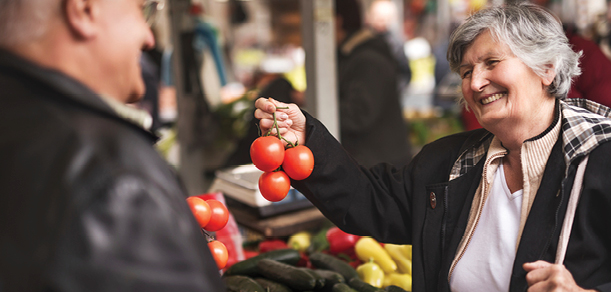
Preparation
Vegetables can be prepared in a variety of ways. Many people just think of boiling or steaming, which work just great, but there are so many other options. Here are a few:
- Spiralize: These great tools will turn your squash or zucchini to spaghetti-like strands. Cook them and serve them with spaghetti sauce or use them raw as a “pasta salad.”
- Grill them: Kabobs, anyone? At your next fall barbecue, kabob your vegetables. Place onion, squash, and zucchini on a skewer. You’ll be amazed at the flavor.
- Roast them: Roast your favorite vegetables (brussels sprouts, carrots or broccoli) by quartering vegetables. Toss vegetables in a small amount of olive oil with some seasonings like garlic, rosemary or thyme. Roast for 30 minutes or until browned, stirring every 10 minutes or so.
- Eat your veggies fresh: Veggies and dip, veggies and peanut butter or veggies and hummus can be a great way to serve veggies at a social event or at home! Fall veggies such as kale can make a wonderful salad!
- Make them into a puree: Pumpkin puree can be used to boost the nutritional value of many food items! Add it to your chili, your smoothie or your latte. Make puree by roasting fresh pumpkin and then pureeing it.
Fall Recipe:
Butternut Squash, Kale and Black Bean Quesadillas
Ingredients:
2 cups pre-chopped peeled butternut squash
6 tablespoons water
2 cups baby kale
1 teaspoon canola oil
1/4 teaspoon salt
1 cup canned unsalted black beans; rinsed and drained
4 (8-inch) whole-wheat flour tortillas
6 ounces shredded part-skim mozzarella cheese (about 1 1/2 cups)
Cooking spray
Directions:
- Heat a skillet over medium heat. Add squash and 6 tablespoons water; cover and cook for 6 minutes. Uncover and stir in kale, oil, and salt; cook for 2 minutes. Remove from heat.
- Place 1/2 cup beans in a bowl; mash. Add remaining 1/2 cup beans and squash; toss. Divide mixture among tortillas; top evenly with cheese. Fold each in half over filling. Coat tortillas with cooking spray.
- Wipe skillet clean; return to medium heat. Add two quesadillas; cook for 2 minutes on each side. Repeat with remaining quesadillas.
Source: www.CookingLight.com
Just Remember
Fall will come and go and there will soon be snow on the ground. Take advantage of cool temperatures, evening walks and delicious fall vegetables. You’ll be amazed how much you will enjoy them. Trying one or two different vegetables this fall can really change your meals!
About the Author:
Sarah Muntel, RD, is the Bariatric Coordinator at Community Bariatric Surgeons in Indianapolis, IN. She has 15 years of experience working with bariatric patients and loves to work with people as they change their lives and improve their health. Her favorite part of her job is her weekly support group. In her free time, Sarah enjoys spending time with her husband and three children.
by Sarah Muntel, RD Spring 2024 Spring has sprung, bringing sunnier and warmer days! For many, this…
Read ArticleWith fall in full bloom and winter right around the corner, the seasons are changing rapidly and…
View VideoWith the holidays behind us and 2022 now here, many of us are ready to tackle our…
View Video






